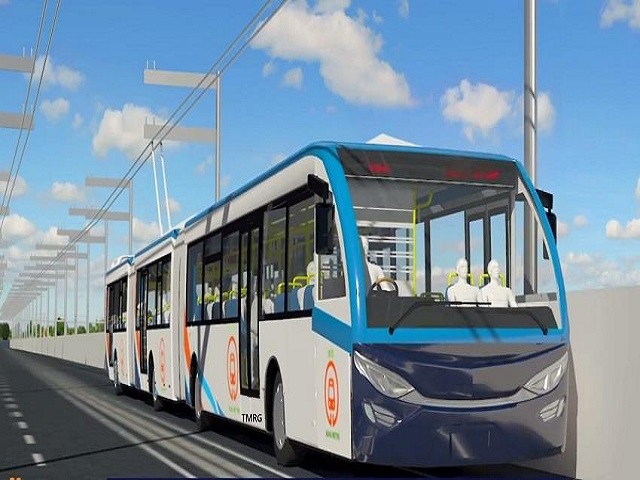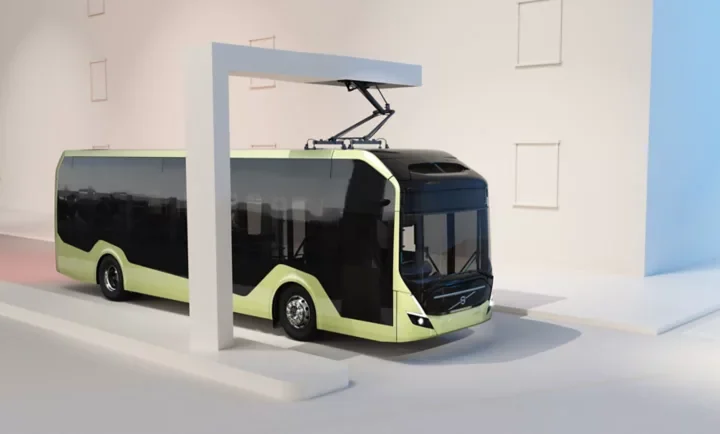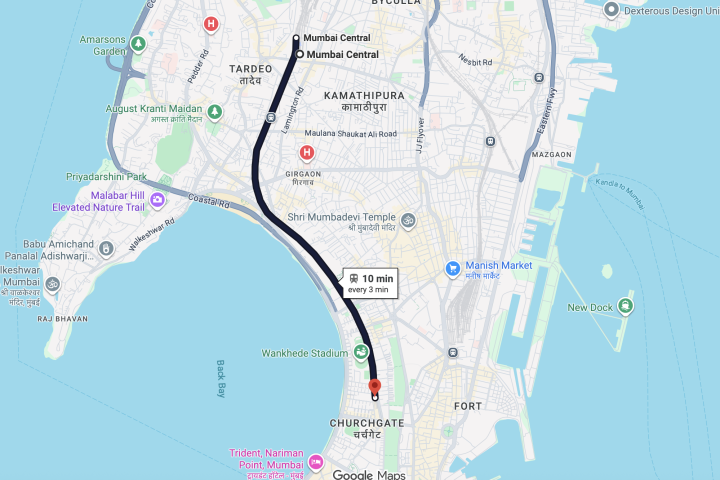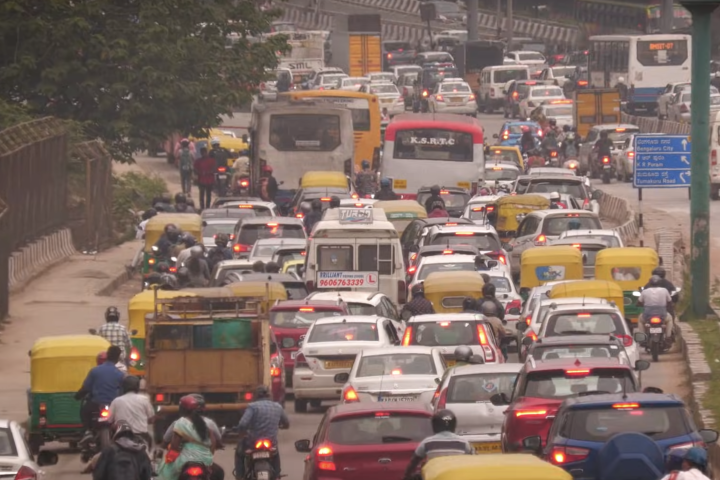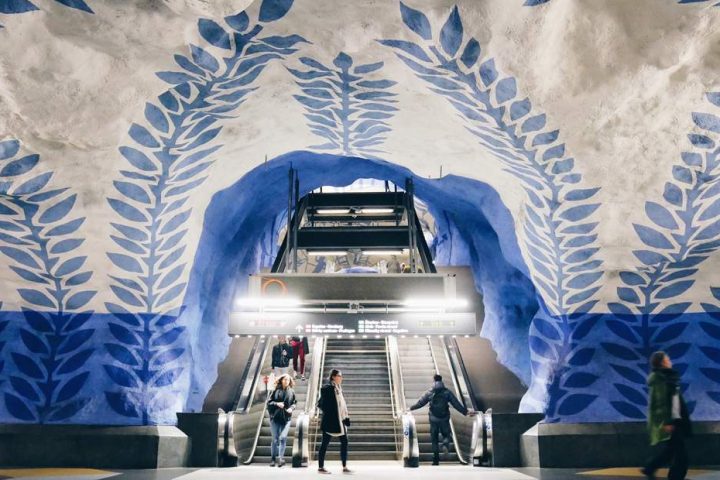Trolley bus system is an old but popular transport mode that has been deployed in various cities across the world. It is a form of electric bus that runs on rubber tires and draws power from overhead wires using trolley poles. Unlike trams, it doesn’t require tracks, making it more flexible while still benefiting from electric propulsion.
Around 2016-2017 the Indian government which had placed all its eggs in Metro system’s basket started to realize how unfeasible it was in most cities. In 2019, it came out with a policy for a cheaper metro system called “Metro Lite”, which in essence was just a tram.
In 2021, it took a step further with ‘Metro Neo,’ offering an even cheaper option for Tier 2 and 3 cities looking to implement a mass rapid transit system.
Metro Neo was designed for 8,000 Passengers per hour per direction(PHPDT) which could be extended to about 10,000. Cities were free to decide between at-grade or elevated sections or a combination of both based on availability of space.
The image below, taken from the government’s policy document, highlights all of its features.

Nashik and Warangal were the first two cities keen to adopt this mode. Nashik, in fact, had a detailed plan featuring a 33-km stretch with 30 stations covering the city. The design also avoided private land by utilizing the median of existing roads.

Maha Metro, the umbrella organization that oversees such projects in Maharashtra even built a working prototype of the design at its Nagpur facility. Their idea was to seamlessly implement it in several cities of Maharashtra starting with Nashik.

Interestingly, during the same period, Delhi was also considering this mode to supplement its existing Metro train network. A Detailed Project Report (DPR) was being planned for the Kirti Nagar-Bamnoli route, originally intended for Metro Lite, which would save the government about ₹600 crore.
In 2021, Gandhi Nagar also expressed interest in the system and floated a tender to prepare a detailed report for design and implementation. Ghaziabad wanted to add three lines, while Pune, Navi Mumbai, Bengaluru, Kochi, Hyderabad, Coimbatore and Mysuru were among many other cities keen to adopt it due to its low-cost nature. In fact, Thane Municipal Corporation had already cleared the proposal to develop a 28.8-km corridor at an estimated cost of Rs 6,279 crore.
The bus and coach building industry was quite enthused by these developments and had the necessary technology to kick-start the manufacturing of trolleybuses.
For Nashik alone, the 2021 Union Budget allocated ₹2,092 crore to this system, as it was among the first to conduct a feasibility study and secure state government approval.

The first axe falls
Pune which was planning a 43 km with an estimated cost of Rs 4940 crore started to face headwinds. State Deputy CM Ajit Pawar instructed officials not to implement the project until Nashik one was executed.
For no apparent reason, the fate of Pune’s Neo Metro was made dependent on another city. According to the Detailed Project Report, Pune was supposed to have this system up and running by the year 2028.
While this was happening, Nagpur—another city in Maharashtra—was preparing to host Metro Neo. Then Chief Minister Devendra Fadnavis intended to pilot this in the city.
The current situation
The project has essentially stalled at this point, with no clear direction from the central government.
There have been several false promises and missteps by state governments as well. Warangal, for example, was promised a Metro Neo system in the run-up to the Telangana state elections, but those promises haven’t been fulfilled in the last two years. Efforts to secure central funding support for the Warangal project have also been unsuccessful.
In July 2024, it was reported that the central government had rejected Nashik Metro Neo project, deeming it unfeasible. This is quite strange, considering that Budget 2021 had allocated funding for it, and money is usually allocated only after technical assessment is completed.
In fact, this year (2025) was supposed to be the launch date of Nashik Metro Neo, and construction should have started in 2021 as per plans.
On March 3, 2025, the Maha Metro administration was instructed to discuss this project with the Union Ministry of Housing and Urban Affairs to ultimately decide whether to proceed or drop it entirely.
Future is bleak
The situation with Nashik, which was spearheading this project, provides a hint of what other cities can expect—delays and more delays, with no clear policy guidelines or funding.
The fate of Metro Neo is similar to that of Bus Rapid Transit System(BRTS) which received no central assistance to operate and was left for the states to manage.
The central government’s reversal from 2021 to 2025 is hard to explain – perhaps they no longer believe in dedicated at-grade transit systems like BRTS, Metro Lite, and Metro Neo, or maybe they have shifted their focus to procuring Metro coaches and EV buses.
State governments, for their part, are choosing not to raise funds independently for this and are instead prioritizing flyovers and tunnels. Pune, Bengaluru, and Hyderabad have doubled down on building car-centric infrastructure in the past few years, without investing much in mass transit systems.
With no full-fledged Metro trains, Tier 2 and 3 cities will have to rely on buses for the foreseeable future, unless someone steps up and starts backing their promises with action. The hope for dedicated transit modes has nearly disappeared.
